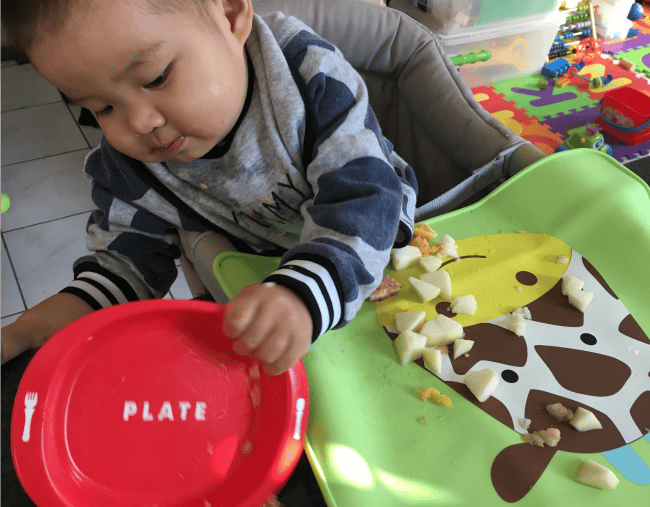

Parents go through a lot of trial and error while introducing and exposing toddlers to a variety of foods. For me and my partner, that’s meant constantly searching for recipes that are both tasty and nutritious, shopping the ingredients, and making the food – only to have my 15-month-old son eat only a few spoons full. The rest? Well, it ends up everywhere but his mouth.
Hugo only entered toddlerhood a few months ago, and our first major toddler challenge presented itself right away. Anyone else who’s been there knows the two words I’m about to say: Fussy. Eating.
The only meal time at home is dinner, and Hugo always eats the same thing every day: A mix of chicken, potato, sweet potato and cheese. Any new foods introduced to him are a struggle – he gives up after two spoons, even if it’s a bowl of tasty shredded veggie nuggets.




